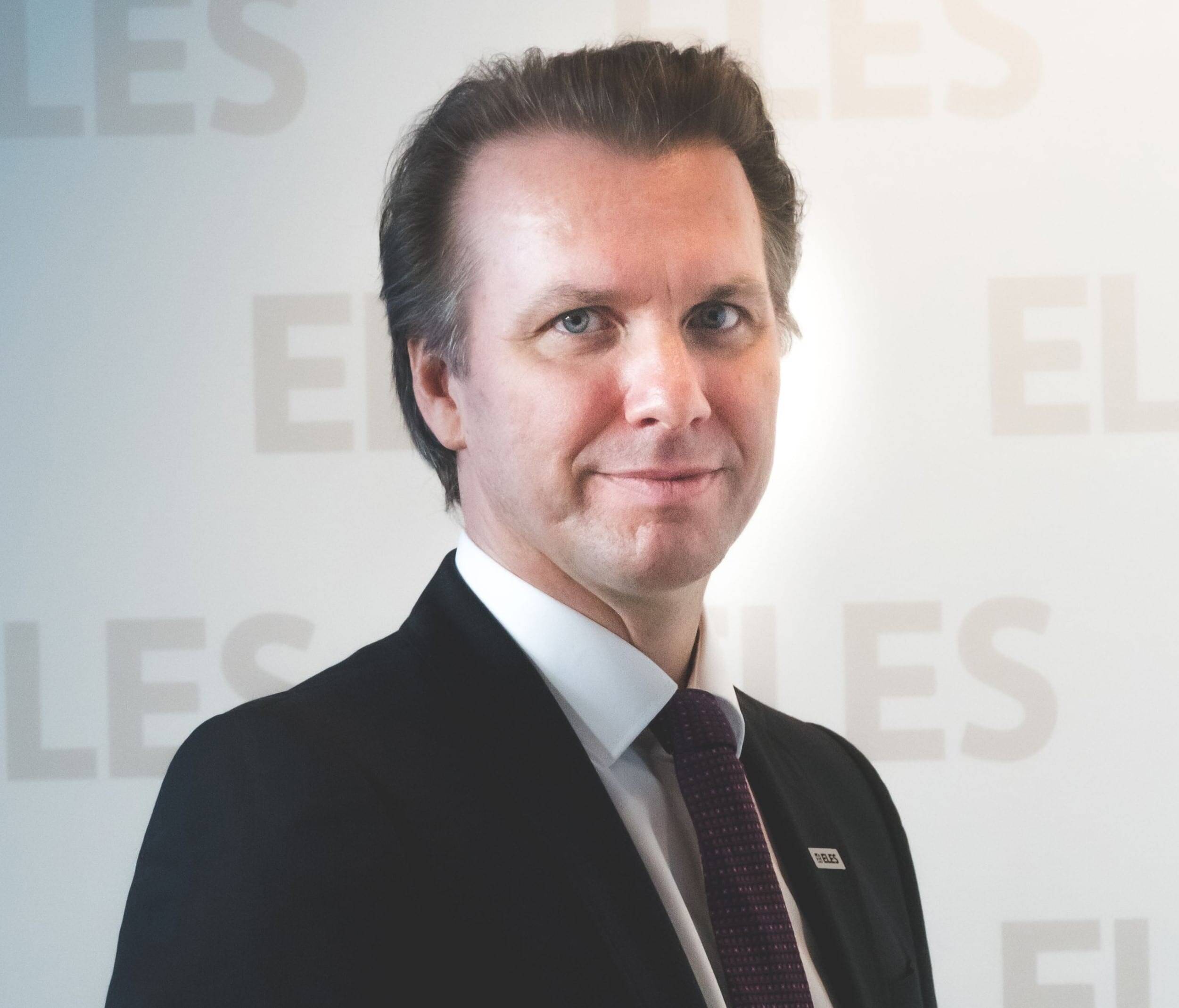You’ve reached your limit!
To continue enjoying Utility Week Innovate, brought to you in association with Utility Week Live or gain unlimited Utility Week site access choose the option that applies to you below:
Register to access Utility Week Innovate
- Get the latest insight on frontline business challenges
- Receive specialist sector newsletters to keep you informed
- Access our Utility Week Innovate content for free
- Join us in bringing collaborative innovation to life at Utility Week Live
The fall of in demand for electricity has thrown the spotlight on the need for a flexible grid. For Uroš Salobir, head of innovation at ELES, the Slovenian transmission system operator, this points to the need for international collaboration in grid development
 Do you think the drop in energy demand as a result of the pandemic has shone a new light on the importance of investing in a flexible grid?
Do you think the drop in energy demand as a result of the pandemic has shone a new light on the importance of investing in a flexible grid?
Yes definitely, the pandemic in many ways has given grid operators a window into the future where a high penetration of renewables and variable demand patterns will be the norm, highlighting the importance of operators’ ability to respond accordingly. We are about to witness a green recovery backed by a new wave of investments in renewables, the electrification of transport and the heating sector. Because of the pandemic and its knock-on impacts, we are constantly learning more and are in a better position to estimate daily demand profiles, which will have a large influence on the future of electricity pricing. These developments are encouraging the sector to re-think our priorities when it comes to future proof grid investments.
What are the specific challenges associated with increased renewables penetration into the grid and how can operators overcome those?
Increased intermittency, balancing costs and grid stability are some of the obvious challenges but at the same time we must think about individual energy sources and their respective demands. Operators need to extend their thinking beyond the  narrow borders of their networks. Issues apparent in one country or on one grid can often be resolved through cross-border collaboration and by thinking in a holistic way we can resolve many of the common issues before they before they happen.
narrow borders of their networks. Issues apparent in one country or on one grid can often be resolved through cross-border collaboration and by thinking in a holistic way we can resolve many of the common issues before they before they happen.
For example, many would think that electricity prices would not be a key concern for operators . However, if one does not understand daily and seasonal price variations, then it becomes virtually impossible to truly optimise the system. This holistic approach may be also applied to cross-sector orientation. In the end, looking at all the grids, the energy sources that flow through them and the demand for each is just a very complex form of market optimisation.
What makes Slovenia’s power network such a good base from which to lead grid demonstration projects?
Slovenia’s power network has been playing a key role in Europe for decades, connecting some of the most important Central, Southern and Eastern European power markets by providing a solid, reliable transmission hub. Slovenia’s history as a centre of exchange and interconnection (as well its stability compared with some of its neighbouring grids) pushed us to contribute to large international projects like FutureFlow and SINCRO.GRID, where our experience and capabilities can be utilised to help foster developments across the continent.
What were the key findings from your demonstration projects that are applicable to other markets such as the UK?
What we found is that grid architecture is essential. To balance end-users’ demand, power grids must be designed with flexibility at their core, and involve everyone in the value chain. In fact, the practical needs of the system are much more important than any of the specific energy sources powering it. This requires an unbiased assessment.
Our projects have also made evident that the transition from the current system to the grid of the future will require coordinated cross-border action with interconnectivity playing a crucial role in decarbonisation. Arguably, this will be the most challenging part in the energy transition and will only be possible through multilateral actions and shared intent.
We are extremely proud to have received the ISGAN Award of Excellence for our flagship NEDO and FutureFlow projects, highlighting their importance in the development of smart grid innovation particularly where it concerns consumer empowerment. NEDO and FutureFlow demonstrate how significant a role consumers can play in making the market more flexible and resilient by offering key ancillary services. In the future, they will be able to monetise their demand flexibility and gain from their electricity bills.
How prepared is the European grid for the race towards net-zero? Can the energy system accommodate an exponential increase in the renewable generation?
The European grid has always supported the ambitious development goals set by European policymakers and member states. The various grid operators throughout the continent continue to work collaboratively to provide the most efficient, cost-effective and reliable way of delivering renewable energy to customers.
In Slovenia, we hope for more coordination and creativity in the way we look at improving the vast, interconnected European system. This is indeed one of the most valuable elements of European economic integration and it is vital in order to unlock the enormous amounts of regionally concentrated renewable power across the Union.
Do you think having a supplier-led smart meter deployment like the UK hinders or supports consumer empowerment when it comes to energy?
It depends on the case and how “smart” the deployment actually is. There have been many examples in Europe of similar projects that were not based on practical considerations, presenting huge challenges once they became operational. On the other hand, there are several effective programs currently running across the continent and even locally within the UK that justify large smart meter deployments.
The evolution of demand-side requirements, around the uptake of electric vehicles, for example, is expected to put increased pressure grids, what is the solution to ensure we have the adequate infrastructure to support these ancillary technologies?
To answer this question, we first need to understand drivers’ behaviour. Where are these electric vehicles parked? How long are they staying there? What is the best location to charge them and are any of these locations close to a strong connection point? These considerations apply to personal cars but also lorries, buses, taxis and (maybe in the near future) autonomous vehicles. To take everything into account, we need employ a practical approach and ensure planning and legislative frameworks can catch up with technology development. And again, price is an essential signal when trying to implement complex grid architecture strategies. Some experts believe that individual battery storage would be an easier solution to this issue but I tend to disagree with their stance.
How important is national government / EU support and international collaboration in fostering research and development in the grid space?
Incredibly important and the challenge is particularly complex, especially in Europe. The sheer number of stakeholders involved requires pan-European solutions and cross-sector collaboration. For this reason, I see national governments and EU institutions as essential catalysts of change. Without them, these structural transformations would never proceed as smoothly.
Slovenia has benefitted significantly from the European institutional support and our projects have been operating very efficiently. It’s possible that these changes would happen anyway as a result of market developments. However, this option would be significantly more wasteful and would likely have produce redundant investments. Collaboration and planning, on the contrary, help facilitate a leaner transition. By this, I do not mean to support top-heavy, centralist solutions but rather collaborative actions focused on research, innovation and deployment. If this is the route we take, we have reasons to be optimistic about the future.
What do you think are the key priorities for the EU energy system as we focus on a sustainable recovery?
The EU is already focused on boosting a new wave of research and innovation initiatives that are expected to materialize into actionable projects as soon as practically possible. These plans should be conceived as mission-oriented business challenges, with the aim of providing realistic solutions for decarbonisation by 2030.
What is the most game-changing development you see dominating the grid space in the next decade?
I think that the biggest game changer will be cross-sector integration. For optimisation plans to work, we will need to look beyond the grid’s borders and embrace the entire energy system and its dynamics. It is an ambitious goal and something to look forward to.




Please login or Register to leave a comment.